
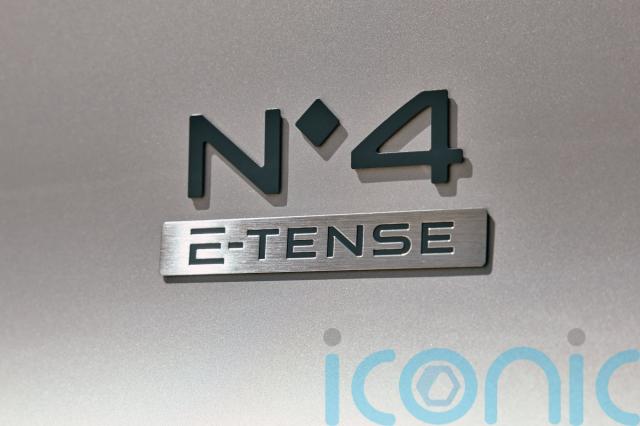
It’s been a bit quiet of late over at Stellantis’s premium carmaker DS. The brand, which was hived off from Citroen a decade ago, has had a relatively slow upbringing with just a handful of models to exhibit its posh joie de vivre, with the last car, the DS 4, launching four years ago.
This year, though, the panache is back – in fact, according to DS’s new boss, 2025 is almost a reset for the brand. It has a new naming structure for its cars, with new models adopting a luxurious perfume-sounding ‘No’ (number), and a stunning new all-electric range-topper called No8 (number 8) that’s already been chosen by the French president as his favourite wheels. Following quickly on from the No8 coupe-SUV is the No4, and here we’re driving it for the first time.
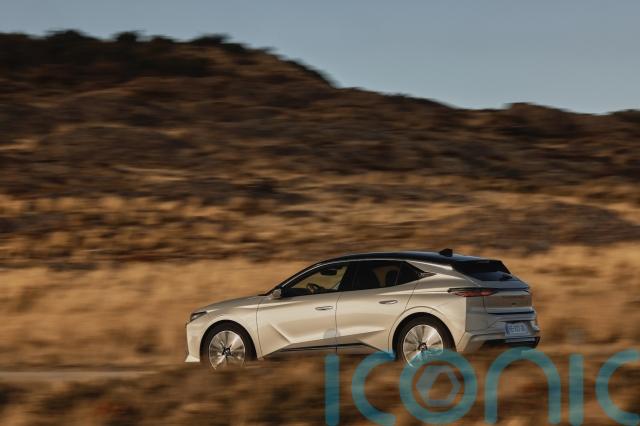
Unlike the No8, the No4 isn’t an all-new model. It’s essentially a facelift, but there’s a little more to it than just a new name and tweaked styling, as Stellantis has finally allowed DS’s posh hatchback to come into the electric age.
Despite the previous DS 4 using the same platform as the Citroen C4, Peugeot 308 and Vauxhall Astra, it was never available as a pure-electric version, unlike its sisters. The No4 has rectified this.
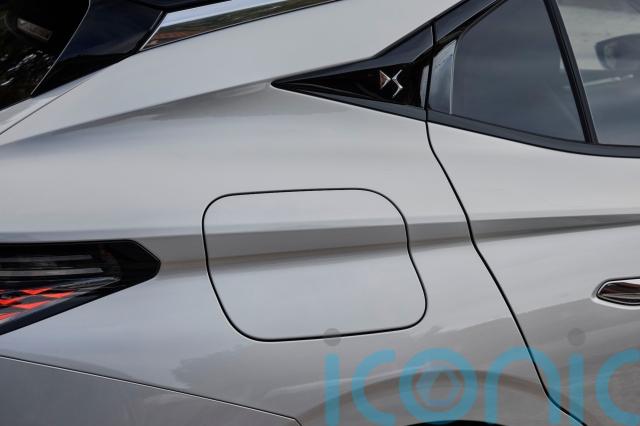
The pure-electric No4 E-Tense gets a 58.3kWh battery pack hooked up to a 213bhp electric motor that drives the front wheels. That means the DS gets a larger battery and more power than its Stellantis stablemates, so while it’s late to the party, it has more to brag about. The No4 has a claimed range of 279 miles, and is capable of DC fast charging up to 120kW.
DS has updated the 1.6-litre petrol plug-in hybrid, too, with it now developing 222bhp (50bhp more than before), and it can now travel 50 miles on electric power thanks to a larger 14.6kWh battery pack. The 143bhp 1.2-litre hybrid returns, with DS claiming this engine can run on electric power for around 50% of the time in town. European customers will also get the choice of a diesel, but, at this stage, it’s unlikely to cross the channel to the UK.
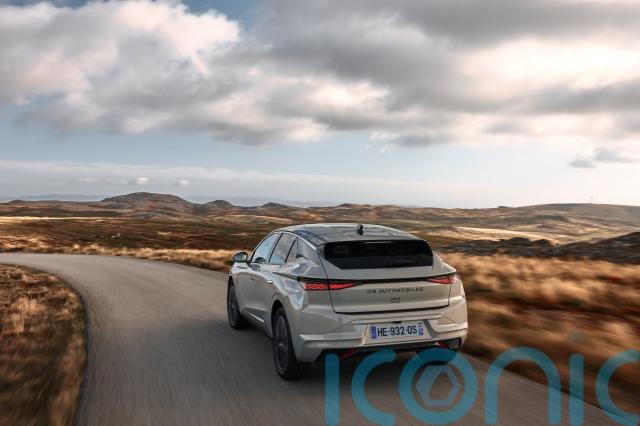
It may have been a long time coming, but it’s clear that pure-electric power really suits DS’s hatchback. The No4 gets laminated, or ‘double-glazed’, front windows, and higher trims get the same for the back windows, and consequently, it’s a very hushed driving experience. The motor’s 213bhp gives punchy but not neck-snapping performance, getting nicely up to speed in a very refined kind of way. The steering has a good weighting to it, and body control is a nice balance between comfort and firmness on twisty roads.
The E-Tense is more of a match to the French luxury feel DS is striving for on account of its quietness and refinement. As for the plug-in hybrid, while it does have a softer ride around town compared to the electric No4, it feels a bit raucous and clunky when pushed.
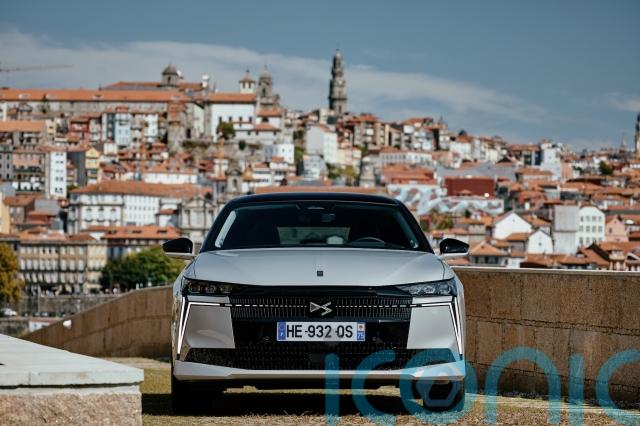
The previous DS 4 was a handsome car that arguably still looked fresh despite being four years old. But, naturally, the change from 4 to No4 has ushered in some new styling motifs, some already seen on the No8 range-topper. There’s a longer bonnet that butts up against a new grille and bumper design, with the most striking change being the V-shaped day-running lights that stretch across the car’s face and bookend a new illuminated DS badge.
Aside from some new wheel designs, it’s pure DS 4, although you may notice ‘DS Automobiles’ is stretched out in letters across the tailgate. It’s rather crudely done in our opinion, with it feeling like the letters could easily fall off if you – or your valet, this is a DS, after all – chamois the car a little too vigorously after washing it.
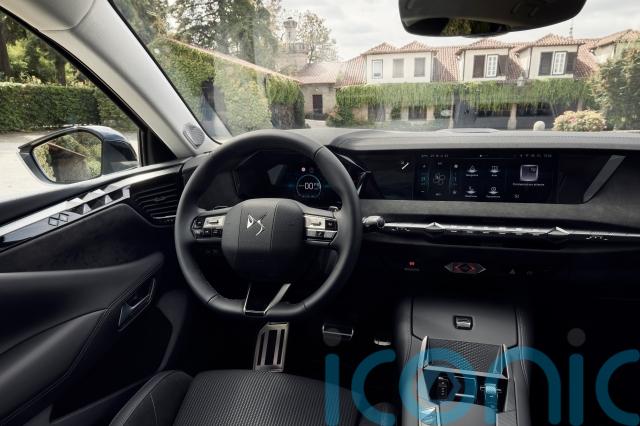
There are even fewer updates on the inside, with the changes limited to a larger screen for the digital dials, and the removal of the rather pointless third screen that sat on the centre console ahead of the gear selector in the DS 4. Just like its predecessors, there are a few awkwardly placed and strangely shaped controls dotted around the interior, but it’s a very nice place to be. It feels very upmarket with lots of soft leathers and metal detailing, and it feels cosy too – its design is in sharp contrast to the current trend of large screens and open space. We just wish Stellantis overhauls its infotainment offering soon, as the system is now starting to feel clunky, outdated and frustrating to use.
Speaking of space, there’s decent room up front, while in the back it’s average – six-footers might struggle to get completely comfortable, but it’s something that rivals like the BMW 1 Series and Mercedes-Benz A-Class also suffer with. At 430 litres, boot space is class-leading if you opt for the hybrid; the electric version gets 390 litres.
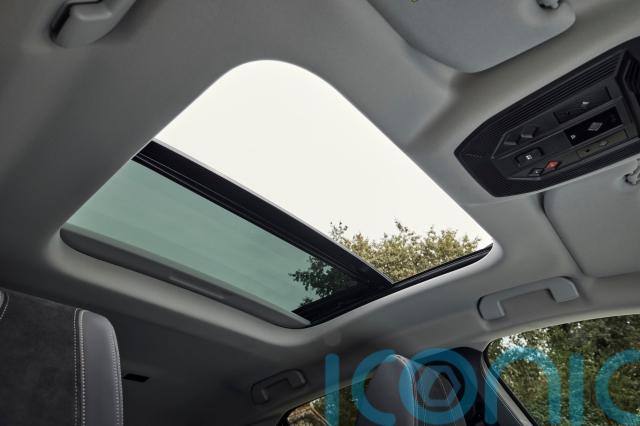
It’s all-change on the trim range, too, with the old structure ditched for the even more posh-sounding Pallas, Pallas+, Étoile and Étoile Nappa, with each power source getting a different selection of those trims.
The basic Pallas gets all the basics and more, including LED lights front and rear, front and rear parking sensors, acoustic laminated front glass and adaptive cruise control. Pallas+ adds 3D connected nav, ‘Iris’ voice recognition, wireless charging, heated front seats and electric driver’s seat, and a heat pump for the electric model. Étoile ramps up the luxury with alcantara trim, head-up display, matrix LED headlights and scrolling indicators, and the Étoile Nappa adds power seats upholstered in brown – you guessed it – Nappa leather.
The hybrid ranges from £32,200 to £37,400, the plug-in hybrid is priced from £39,000 to £44,200, while the pure-electric stretches from £36,995 to £41,860.
The transformation from DS 4 to No4 has certainly given DS’s posh hatchback a USP over rivals like the Audi A3, BMW 1 Series and Mercedes A-Class, as it comes in a pure-electric version. The EV is the best example of the No4, too – its quiet and refined nature is in keeping with the luxury vision DS has been trying to convey since it was formed a decade ago.
The No4 just – but only just – validates its price premium over its electric Stellantis sisters, particularly the excellent Peugeot E-308, due to its greater power and range credentials, and it certainly has an upmarket air about it. But the gap between the supposedly humdrum E-308 and cut-above No4 is smaller than it is between Volkswagen Golf and Audi A3, for example. Ultimately, the No4 is a very appealing car, but whether DS is on the brink of properly breaking into the premium ranks and taking customers away from the German brands remains to be seen.
Subscribe or register today to discover more from DonegalLive.ie
Buy the e-paper of the Donegal Democrat, Donegal People's Press, Donegal Post and Inish Times here for instant access to Donegal's premier news titles.
Keep up with the latest news from Donegal with our daily newsletter featuring the most important stories of the day delivered to your inbox every evening at 5pm.